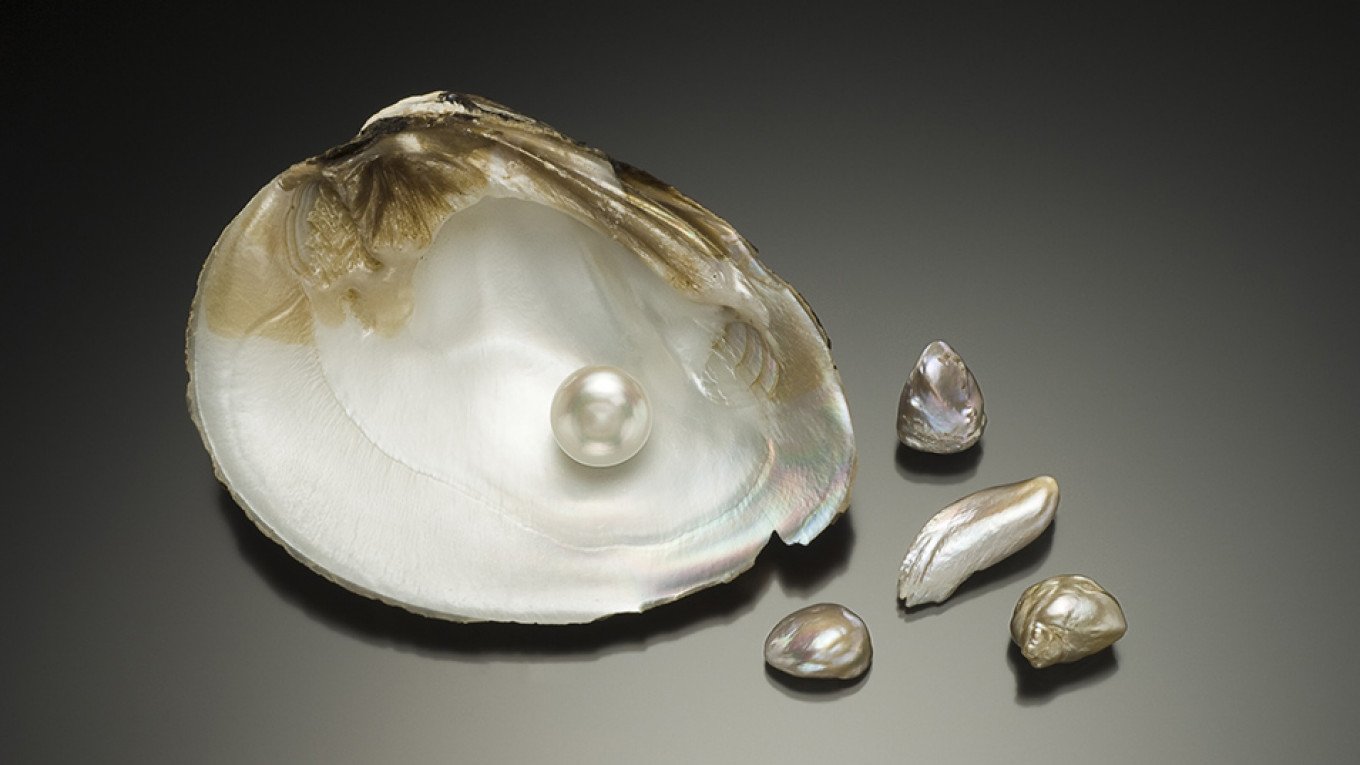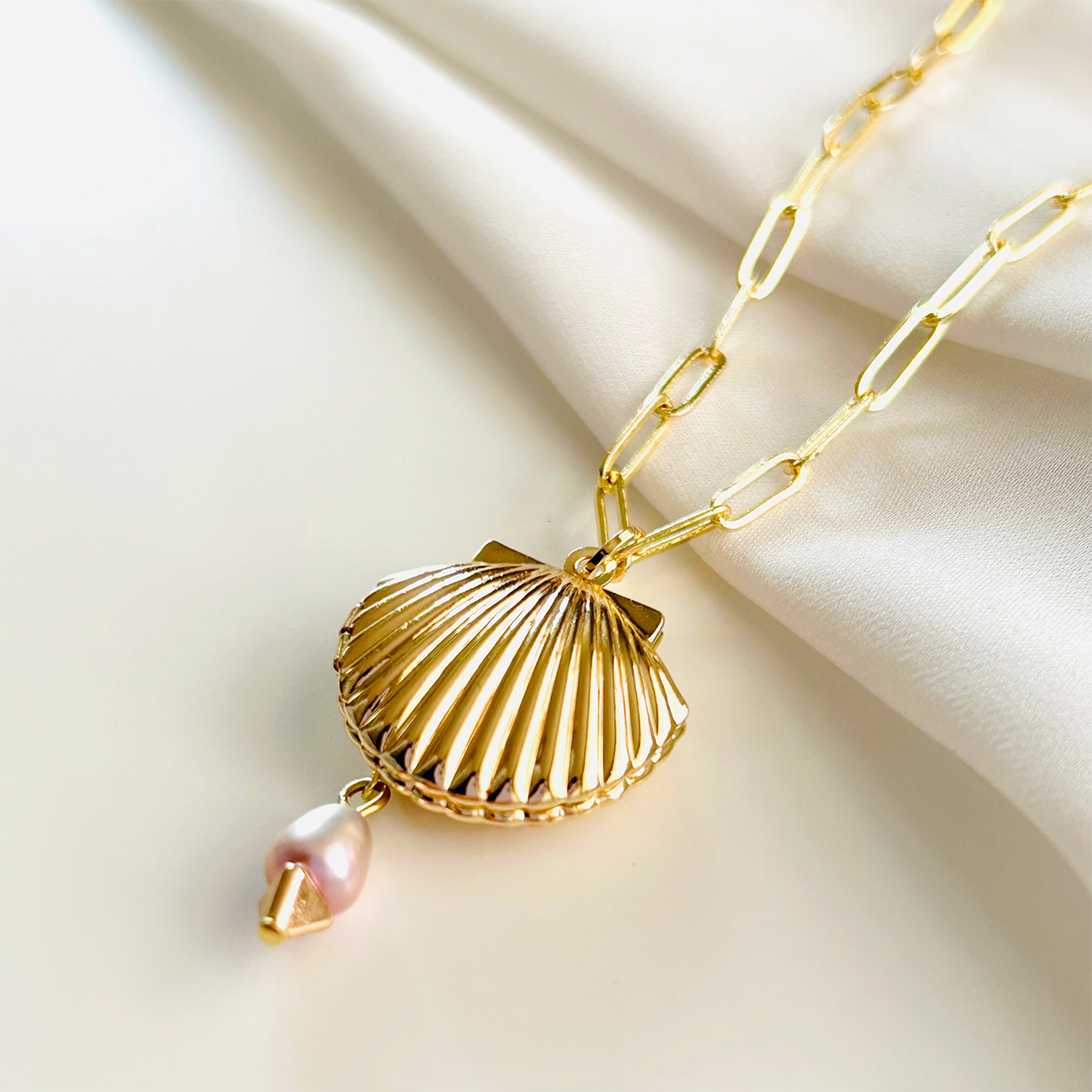
PEARLS
Simply put pearls are gems not stones, and they form within various species of freshwater and saltwater mollusks. Pearls have been valued as gemstones for millennia, while most minerals like diamonds or sapphires are formed underground, pearls have organic origins. Pearls are always linked to femininity and fertility.
Valued for their calming effects, pearls represent serenity, strengthen valuable relationships and offer protection to the wearer, as well as attract good luck and wealth.
FUN FACT
In ancient Rome, pearls were a symbol of wealth and high status. This is why there was a law that prohibited anyone below the ruling class to wear the gems.
Pearls were among the first materials used for beads and jewellery in human history. Their natural bead-like shape made them easy to use for decoration and yielded lovely results.
In Western cultures, the pearl has astrological associations with the planet Venus. Like pearls, the goddess of love came from the sea.
Many cultures have made lunar associations with pearls because of the watery domain where it is directly under the Moon’s influences and associations.

Geography Locations
Some of the finest pearls are found in the Persian Gulf from Oman to Qatar, the waters between India and Sri Lanka, and the islands of the South Pacific. The Gulf of California, the Gulf of Mexico, and the waters of the Pacific coast of Mexico produce dark-hued pearls with a metallic sheen, as well as good-quality white pearls. Fresh water pearls have been known in China from before 1000BC, and there is a pearl industry in the streams of Bavaria. Freshwater pearls have also been recovered from the Mississippi River in the USA and several rivers in England and Wales.
Pearls from Japan are cream or white with greenish tones; Persian Gulf pearls are usually cream; black or reddish-brown pearls come from Mexico; pink pearls are from Sri Lanka; Australian pearls are white with greenish or bluish shades; and pearls from the Gulf of Panama are golden-brown. Cultured pearls from Japanese and Australian waters are the most popular.
Amazing Properties
Balance
Pearls are believed to have a balancing effect on the mind, body and spirit. They are thought to harmonise and align the chakras, promoting a sense of inner balance and equilibrium. Pearls can help balance emotions, thoughts and energies allowing for greater clarity and harmony in one’s life.
Calming
Pearls are known for their calming effect and soothing energy in millennia. Some cultures grind pearls into powder and drink with water to help people who suffers shock. They are believed to help alleviate stress, anxiety and tension. It helps the wearer feel grounded and a sense of peace.
Protection
Pearls are often associated with divine protection. In ancient times, pearls are used to offer protection against negative energies, evil spirits and harm. It would be often used to be made into talisman and jewellery so wearer could keep it close at all times.

History
The earliest record of pearl being used was from a Chinese historian he written about in 2206 BC. Ancient Greece used to believe they were the tears of the gods, and the oldest pearl jewellery ever discovered was in the sarcophagus of a Persian princess who died in 520 BC.
Because natural pearls were so rare throughout history, it has always been only afforded by the rich and powerful. So it is not uncommon to hear only the royal were allow to wear them, such as the Byzantine Empire, where only the emperor was allowed to wear pearls.
In Ancient Egypt, besides as a symbol of wealth and status, pearls are often buried with the dead in the tombs as offerings to the gods and for protection in the afterlife.
In Ancient China, pearls were revered as symbols of purity, wisdom and spiritual enlightenment, and were believed to promote longevity and vitality. People were often used in traditional Chinese medicine for their healing properties.
Pearl became very popular with the royal and the aristocrat in Europe since the medieval ages, and portraits from this period often show royals wearing pearl jewellery and clothing adorned with pearls, Queen Elizabeth I of England is a prime example of a monarch to borrow the meaning of a gemstone to emphasise her divine power and the purity of her spirit and soul with god’s given rights to rule.
Gemology
Pearl’s chemical makeup is CaCO3, and has the hardness of 2.5-4.5 on Mohs scale.
Pearl is a concretion formed by a mollusc and consisting of the same material as the mollusc’s shell, which is principally the mineral aragonite. In addition to aragonite, the shell contains small amounts of conchiolin, a horn-like organic substance; together these are called nacre, or mother-of-pearl. The finest pearls are those produced by molluscs whose shells are lined with mother-of-pearl; such molluscs are limited to certain species of salt-water oysters and freshwater clams.
ALL SHAPES & FORMS










Associated Goddess
Aphrodite
Greek Goddess of love, beauty, pleasure, passion and procreation. Unlike many other deities in Greek mythology, she was one of a few who were born fully grown instead of an offspring of two entities. She was born in the sea off the coast of Cythera, from the foam of the castrated Uranus’ genitals, which his son Cronus has severed and thrown into the sea.
Because of her connections to the sea, Aphrodite was associated with many types of water creatures and items, include the conch shells, swans, geese and duck.
She often went to aid lover’s request, for example, helping Hippomenes to outrun this beauty called Atalanta, who would only marry the main who’d outrun her in a race.




